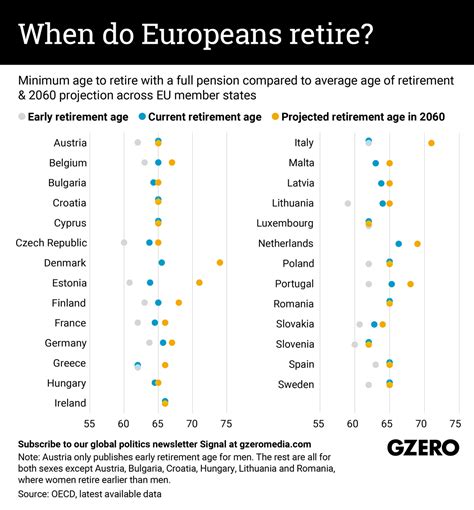
In-N-Out Burger is facing a significant menu alteration in California due to a new regulation championed by Robert F. Kennedy Jr., mandating warnings on products containing acrylamide, a chemical formed in the cooking process of fried foods like French fries. The burger chain is opting to reformulate its fries rather than display the mandated warning label.
California’s beloved In-N-Out Burger is tweaking its iconic menu, specifically its French fries, in response to a California regulation influenced by environmental lawyer Robert F. Kennedy Jr. The regulation, targeting acrylamide, a chemical compound that can form in starchy foods during high-temperature cooking processes like frying, is prompting the fast-food chain to reformulate its fries instead of placing a warning label on its products. This decision underscores the challenges businesses face in navigating California’s stringent consumer protection laws.
The regulation stems from California’s Proposition 65, officially known as the Safe Drinking Water and Toxic Enforcement Act of 1986. This law requires businesses to provide warnings about significant exposures to chemicals that cause cancer, birth defects, or other reproductive harm. Acrylamide falls under this regulation due to studies linking high levels of exposure to cancer in laboratory animals.
In-N-Out’s decision to alter its French fry recipe rather than post a warning highlights a growing trend among food companies operating in California. The presence of a Proposition 65 warning label can significantly deter customers, leading to potential revenue losses. As such, companies often choose to reformulate their products to minimize acrylamide levels or find other ways to comply with the law without scaring away consumers.
“In-N-Out is choosing to reformulate its French fries rather than display the mandated warning label,” noted sources familiar with the situation. This strategic choice reflects the company’s commitment to maintaining its brand reputation and customer experience.
Acrylamide forms naturally when starchy foods, such as potatoes, are cooked at high temperatures, like during frying, roasting, or baking. The chemical is not intentionally added to food products but is a byproduct of the Maillard reaction, which is responsible for the browning and flavor development in cooked foods.
While studies have linked high doses of acrylamide to cancer in laboratory animals, the levels typically found in food are considered relatively low. However, due to the precautionary nature of Proposition 65, even low levels can trigger the warning requirement.
The decision by In-N-Out Burger to change its fry recipe reflects a broader trend within the food industry. Many companies are actively working to reduce acrylamide levels in their products to avoid the need for warning labels. These efforts include adjusting cooking temperatures and times, selecting potato varieties with lower sugar content, and using additives that inhibit acrylamide formation.
The impact of Proposition 65 extends beyond just acrylamide. The law covers over 900 chemicals, and businesses are constantly faced with the challenge of ensuring compliance. This can involve extensive testing, reformulation, and labeling efforts, all of which can be costly.
Consumer advocacy groups generally support Proposition 65, arguing that it provides valuable information to consumers and empowers them to make informed choices about the products they buy. However, critics argue that the law can lead to unnecessary alarm and that the warnings are often overly broad and not particularly informative.
The reformulation of In-N-Out’s French fries is likely to be a subtle change, and most customers may not even notice the difference. The company will likely focus on maintaining the taste and texture that customers have come to expect while reducing acrylamide levels to an acceptable threshold.
This situation raises questions about the long-term impact of Proposition 65 on the food industry. As more chemicals are added to the list, companies will face increasing pressure to reformulate their products and provide warnings. This could lead to changes in the way food is processed and prepared, as well as increased costs for both businesses and consumers.
For In-N-Out Burger, the decision to reformulate its fries reflects a commitment to adapting to changing regulatory requirements while maintaining its core values and brand identity. The company has a long history of prioritizing quality and customer satisfaction, and this decision is consistent with that approach.
The situation also highlights the role of individuals like Robert F. Kennedy Jr. in shaping public policy. Kennedy’s advocacy on environmental issues has had a significant impact on California’s regulatory landscape, and his work has played a key role in raising awareness about the potential health risks associated with certain chemicals.
Ultimately, the changes at In-N-Out Burger are a reflection of the complex interplay between science, regulation, and consumer preferences. As our understanding of the potential health risks associated with different chemicals evolves, businesses will need to continue to adapt and innovate to meet the changing demands of the marketplace.
Deeper Dive into Proposition 65 and Acrylamide:
Proposition 65, officially the Safe Drinking Water and Toxic Enforcement Act, was enacted in California in 1986. Its primary goal is to protect California citizens and the state’s drinking water sources from chemicals known to cause cancer, birth defects, or other reproductive harm. The law requires businesses to inform Californians about exposures to these chemicals. This is achieved through mandated warning labels on products, in public places, and at workplaces.
The California Office of Environmental Health Hazard Assessment (OEHHA) is responsible for maintaining and updating the list of chemicals covered under Proposition 65. This list currently includes over 900 substances, and it is regularly updated as new scientific information becomes available.
For a chemical to be added to the Proposition 65 list, it must be identified as a carcinogen or reproductive toxicant by one of several authoritative bodies, such as the International Agency for Research on Cancer (IARC) or the National Toxicology Program (NTP). Alternatively, the state of California can make its own determination based on scientific evidence.
Once a chemical is listed under Proposition 65, businesses have one year to comply with the warning requirements. The warning must be “clear and reasonable,” meaning it must be prominently displayed and provide sufficient information to allow consumers to make informed decisions.
Acrylamide is a chemical that forms naturally in starchy food products during high-temperature cooking processes, such as frying, baking, and roasting. It is not intentionally added to foods but is a byproduct of the Maillard reaction, a chemical reaction between amino acids and reducing sugars that gives browned foods their desirable color and flavor.
The presence of acrylamide in food has been a concern for health authorities since the early 2000s when it was first discovered that significant levels could be found in commonly consumed foods like French fries, potato chips, coffee, and baked goods.
Studies have shown that high doses of acrylamide can cause cancer in laboratory animals. However, the levels of acrylamide typically found in food are much lower than those used in animal studies. The International Agency for Research on Cancer (IARC) has classified acrylamide as a “probable human carcinogen,” based on evidence from animal studies.
While the potential health risks of acrylamide in food are still being studied, health authorities generally recommend that consumers take steps to minimize their exposure. This can include cooking starchy foods at lower temperatures, avoiding overcooking or burning foods, and consuming a balanced diet rich in fruits and vegetables.
Proposition 65 requires businesses to provide a warning if their products expose consumers to acrylamide at levels that pose a significant risk of cancer. The “safe harbor” level for acrylamide under Proposition 65 is relatively low, which means that many food products that contain acrylamide are subject to the warning requirement.
The enforcement of Proposition 65 is primarily carried out through citizen lawsuits. Any individual or organization can file a lawsuit against a business that is allegedly violating the law. If the lawsuit is successful, the business may be required to pay penalties, attorney fees, and costs of compliance.
The threat of litigation under Proposition 65 has led many businesses to take proactive steps to reduce the levels of listed chemicals in their products or to provide the required warnings. This has resulted in significant changes in the way products are manufactured, processed, and labeled in California.
Critics of Proposition 65 argue that the law is overly broad and can lead to unnecessary alarm. They point out that the warnings are often vague and do not provide consumers with enough information to make informed decisions. Some also argue that the law has created a cottage industry of lawyers who specialize in filing Proposition 65 lawsuits.
Proponents of Proposition 65 argue that the law has been effective in reducing exposure to harmful chemicals and in raising awareness about potential health risks. They point out that the law has led to significant reductions in the levels of lead in drinking water, pesticides in food, and other harmful substances in the environment.
The case of In-N-Out Burger and acrylamide illustrates the challenges that businesses face in complying with Proposition 65. The company’s decision to reformulate its French fries rather than provide a warning reflects the potential impact of the law on consumer behavior and business decisions.
The Broader Impact on the Fast-Food Industry:
In-N-Out Burger’s decision to reformulate its fries to avoid a Proposition 65 warning label highlights a broader trend within the fast-food industry. Many chains are actively seeking ways to reduce the levels of acrylamide and other potentially harmful chemicals in their products. This is driven not only by regulatory pressures but also by growing consumer demand for healthier and safer food options.
One common approach is to adjust cooking temperatures and times to minimize acrylamide formation. Lowering the cooking temperature and reducing the cooking time can significantly reduce the amount of acrylamide produced in fried and baked foods. However, this must be done carefully to ensure that the food is still cooked thoroughly and safely.
Another strategy is to select potato varieties with lower sugar content. Acrylamide is formed from the reaction between amino acids and reducing sugars, so using potatoes with lower sugar levels can help to reduce acrylamide formation. Some potato breeders are also working to develop new varieties that are naturally lower in sugar.
Some food manufacturers are also using additives that inhibit acrylamide formation. These additives, such as asparaginase, can reduce the amount of acrylamide produced during cooking. However, the use of additives must be carefully evaluated to ensure that they are safe and effective.
In addition to acrylamide, the fast-food industry is also facing pressure to reduce levels of sodium, saturated fat, and trans fat in its products. These efforts are driven by concerns about the health effects of these nutrients, such as high blood pressure, heart disease, and obesity.
Many fast-food chains have introduced healthier menu options, such as salads, grilled chicken sandwiches, and fruit cups. They have also reduced portion sizes and reformulated existing products to lower levels of sodium, fat, and calories.
The fast-food industry is also facing increasing scrutiny over the use of artificial colors, flavors, and preservatives. Many consumers are seeking foods that are made with natural ingredients and that are free from artificial additives.
Some fast-food chains have responded by removing artificial colors, flavors, and preservatives from their products. They are also using more natural ingredients, such as real fruit juice and natural spices.
The changes in the fast-food industry are being driven by a combination of regulatory pressures, consumer demand, and scientific advancements. As our understanding of the potential health risks associated with different chemicals and nutrients evolves, the industry will need to continue to adapt and innovate to meet the changing demands of the marketplace.
The case of In-N-Out Burger and acrylamide is just one example of the challenges and opportunities that the fast-food industry faces in the 21st century. By embracing innovation and responding to consumer concerns, the industry can create healthier and more sustainable food options for all.
Robert F. Kennedy Jr.’s Role and Environmental Advocacy:
Robert F. Kennedy Jr. is a prominent environmental lawyer and activist who has been involved in numerous legal battles and advocacy campaigns related to environmental protection and public health. His work has had a significant impact on California’s regulatory landscape and has played a key role in raising awareness about the potential health risks associated with certain chemicals.
Kennedy is the founder of Waterkeeper Alliance, a non-profit organization that works to protect rivers and waterways around the world. He has also served as senior attorney for the Natural Resources Defense Council (NRDC) and as chief prosecuting attorney for the Hudson Riverkeeper.
Throughout his career, Kennedy has been a vocal advocate for stricter environmental regulations and has often taken legal action against companies and government agencies that he believes are violating environmental laws. He has also been a strong critic of the use of pesticides and other chemicals in agriculture.
Kennedy’s involvement in the acrylamide issue in California is just one example of his broader efforts to protect public health from environmental hazards. He has also been involved in campaigns to reduce exposure to lead, mercury, and other toxic substances.
Kennedy’s advocacy has often been controversial, and he has faced criticism from some quarters for his aggressive tactics and his sometimes-alarmist rhetoric. However, his supporters argue that he has been an effective advocate for environmental protection and public health and that his work has made a significant difference in the lives of many people.
The case of In-N-Out Burger and acrylamide highlights the role that individuals like Robert F. Kennedy Jr. can play in shaping public policy and influencing corporate behavior. By raising awareness about potential health risks and by taking legal action against companies that are violating environmental laws, individuals can help to create a more sustainable and healthier world.
Kennedy’s work also underscores the importance of scientific research in informing public policy. The acrylamide issue is based on scientific studies that have linked high doses of acrylamide to cancer in laboratory animals. While the potential health risks of acrylamide in food are still being studied, the available evidence has been sufficient to trigger regulatory action in California.
The case of In-N-Out Burger and acrylamide is a reminder that environmental protection and public health are complex and multifaceted issues that require the involvement of individuals, businesses, government agencies, and scientific researchers. By working together, we can create a more sustainable and healthier future for all.
The Future of Food Regulation and Consumer Choice:
The In-N-Out Burger situation serves as a microcosm of the ongoing debate surrounding food regulation and consumer choice. On one hand, regulations like Proposition 65 aim to protect consumers by providing information about potential health risks associated with certain products. On the other hand, businesses argue that these regulations can be overly burdensome and can lead to unnecessary alarm.
The future of food regulation will likely depend on a number of factors, including scientific advancements, consumer preferences, and political considerations. As our understanding of the potential health risks associated with different chemicals and nutrients evolves, regulations will need to be updated and revised to reflect the latest scientific evidence.
Consumer preferences will also play a key role in shaping the future of food regulation. As consumers become more informed and more concerned about the health effects of the food they eat, they will demand more transparency and more choices. This will put pressure on businesses to provide more information about their products and to offer healthier and more sustainable options.
Political considerations will also play a role in shaping the future of food regulation. Regulations are often the subject of intense debate and lobbying by different interest groups. The outcome of these debates will depend on the balance of power between different stakeholders, including consumer groups, industry associations, and government agencies.
One possible scenario is that food regulations will become more stringent and more comprehensive. This could lead to increased costs for businesses, but it could also result in healthier and safer food products for consumers.
Another possible scenario is that food regulations will become more flexible and more tailored to specific circumstances. This could allow businesses to innovate and to offer a wider range of products, but it could also lead to increased risks for consumers.
A third possible scenario is that food regulations will remain largely unchanged. This could maintain the status quo, but it could also fail to address emerging health risks and consumer concerns.
Ultimately, the future of food regulation will depend on the choices that we make as a society. By engaging in informed debate and by demanding more transparency and more accountability from businesses and government agencies, we can create a food system that is both sustainable and healthy for all.
The In-N-Out Burger situation is a reminder that food regulation is not just about science and technology. It is also about values, ethics, and social justice. By considering these broader issues, we can create a food system that is fair, equitable, and beneficial for all members of society.
FAQ Section:
1. Why is In-N-Out Burger changing its French fry recipe?
In-N-Out Burger is reformulating its French fries to reduce the levels of acrylamide, a chemical that can form in starchy foods during high-temperature cooking processes. This decision is in response to California’s Proposition 65, which requires businesses to provide warnings about significant exposures to chemicals that cause cancer, birth defects, or other reproductive harm. Rather than displaying a warning label, In-N-Out is choosing to alter its recipe to comply with the regulation.
2. What is acrylamide, and why is it a concern?
Acrylamide is a chemical that forms naturally in starchy foods, such as potatoes and bread, during high-temperature cooking methods like frying, baking, and roasting. It is a byproduct of the Maillard reaction, which is responsible for the browning and flavor development in cooked foods. Studies have shown that high doses of acrylamide can cause cancer in laboratory animals, leading to concerns about its potential health effects in humans.
3. What is Proposition 65, and how does it affect businesses in California?
Proposition 65, officially known as the Safe Drinking Water and Toxic Enforcement Act of 1986, is a California law that requires businesses to provide warnings about significant exposures to chemicals that cause cancer, birth defects, or other reproductive harm. The law covers over 900 chemicals, and businesses must provide “clear and reasonable” warnings if their products expose consumers to these chemicals at levels that pose a significant risk. This can lead to product reformulation, labeling changes, and potential legal challenges for businesses operating in California.
4. Who is Robert F. Kennedy Jr., and what is his role in this issue?
Robert F. Kennedy Jr. is an environmental lawyer and activist who has been a vocal advocate for stricter environmental regulations and public health protections. While the article indicates he “championed” a rule, it’s more accurate to say regulations targeting acrylamide fall under the purview of Proposition 65, a law he has supported through his environmental advocacy. He has played a role in raising awareness about the potential health risks associated with certain chemicals, including acrylamide, through his work with organizations like the Waterkeeper Alliance and the Natural Resources Defense Council.
5. Will the change in the French fry recipe affect the taste and quality of In-N-Out’s fries?
In-N-Out Burger is likely aiming to minimize any noticeable changes in the taste and texture of its French fries while reducing acrylamide levels. The company’s focus is on maintaining the quality and customer satisfaction that it is known for, and the reformulation will likely be a subtle adjustment to the recipe. The success of this reformulation will ultimately depend on whether customers perceive a difference in the taste and quality of the fries.









